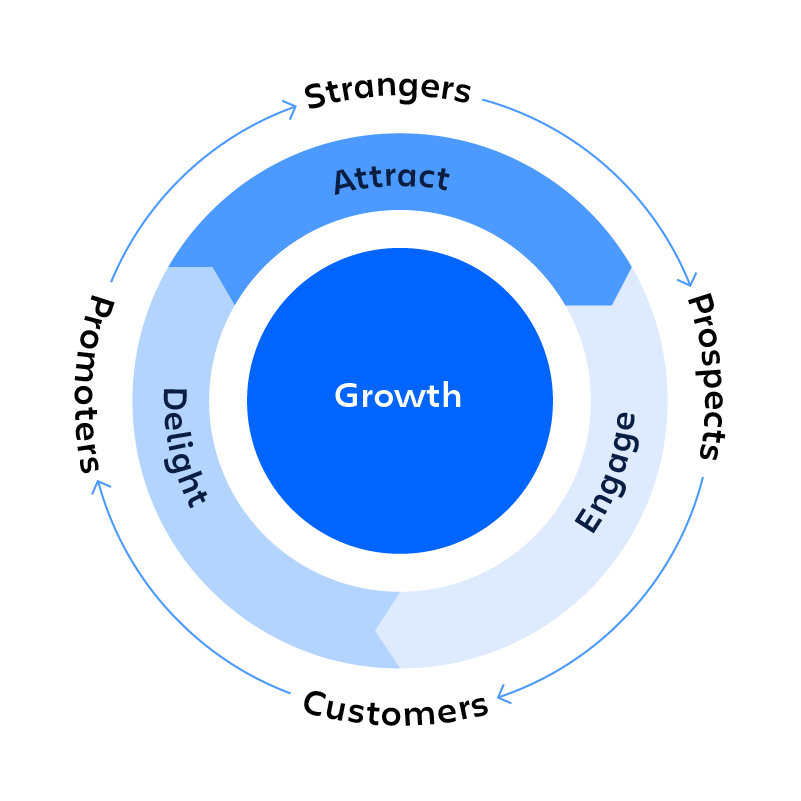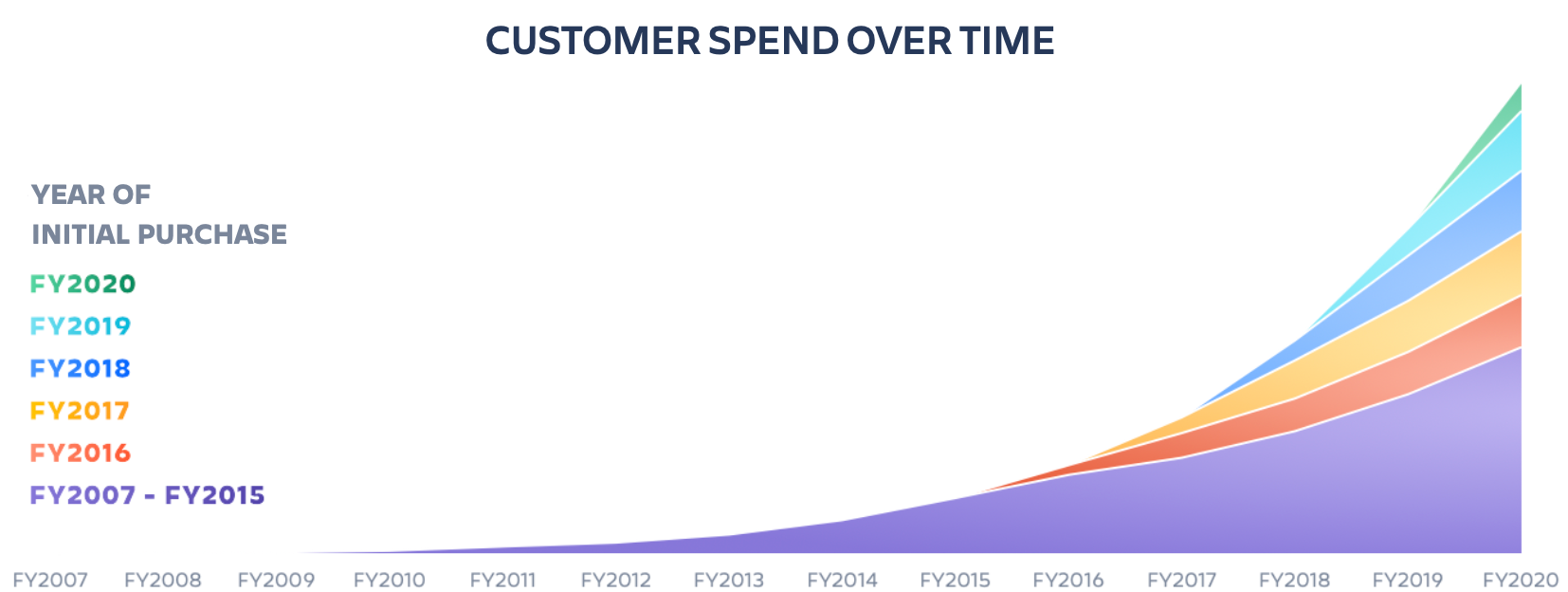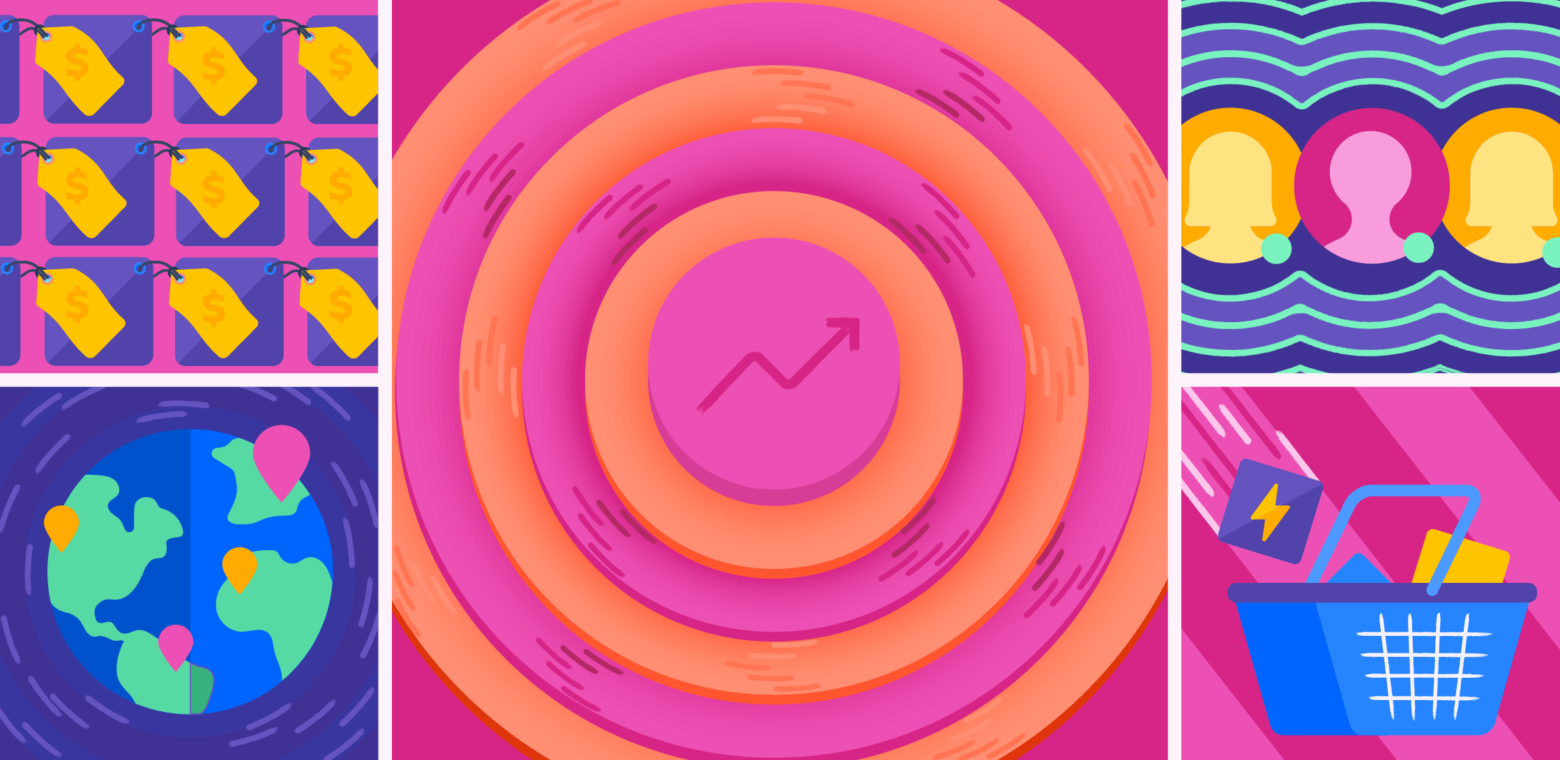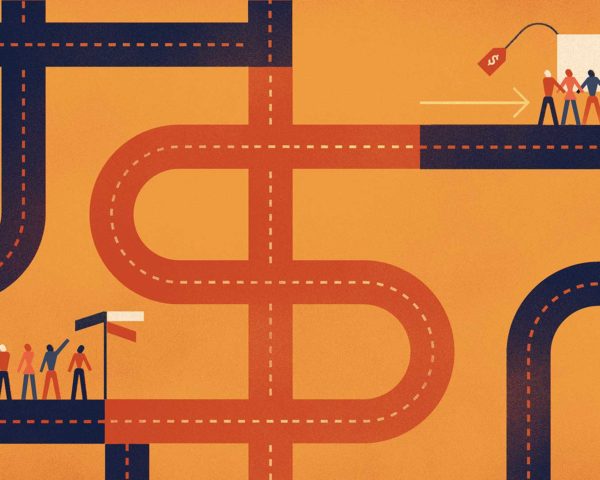5-second summary
This article is part of our series on using the flywheel model to grow your business. Check out the complete collection here.

This is my sleep log. Not my “on vacation” sleep log. My weeknight sleep log as Chief Revenue Officer at Atlassian, where I’m responsible for keeping our revenue trending up and to the right. How do I sleep so soundly? Because at Atlassian, we use the flywheel effect to grow our business.
The great thing about flywheels is that once you get them going, it takes relatively little effort to keep them spinning or to make them spin faster. They’ll even keep spinning on their own for a while. (Full disclosure: we have not tested that hypothesis by, say, turning off our marketing spend altogether – though I like to bring it up occasionally with our CMO just to get a reaction.) So I don’t lay awake wondering how we’re going to get the next batch of customers into Atlassian’s sales funnel. Flywheels attract and engage customers 24 hours a day – they’re literally working while you sleep.
Whether you’re a startup trying to expand or an established company looking for a more efficient go-to-market (GTM) approach, the flywheel model is the best model I know of. And after working with it for close to 10 years, I’ve learned a few lessons that I hope you can use to grow your business.
What is the flywheel effect and how can it grow your business?
The flywheel effect happens when small wins for your business build on each other over time and eventually gain so much momentum that growth almost seems to happen by itself – similar to the momentum created by a flywheel on a rowing machine.
The flywheel model is based on a concept from Jim Collins’ classic business book “Good to Great.” Put simply, the central idea is that your customers are your best salespeople. If you make them happy, they’ll tell their friends. And if you make your product easy to learn about and purchase, those friends will buy it. Then your new happy customers will tell their friends, and so on.

It’s a virtuous cycle that has three major components:
- Attract – Draw prospective customers to you with helpful content that is easy to discover. SEO, social media, targeted advertising, and live/virtual events all have a role to play here. Focus on earning their attention rather than forcing yourself into their line of sight.
- Engage – Now that you’ve made a good impression, make it easy for prospects to learn about your product on their own terms in and their own time, and ultimately buy it. Nurture campaigns, free trials, and a self-serve purchase flow are your best friends in this phase.
- Delight – Design your product to be as easy to get started with as possible. Offer documentation and knowledge bases that help customers get more value out of what you’re offering. Solicit customer feedback and act on it. Your goal here is to turn users into fans, who will recommend your product to their peers, friends, and even to perfect strangers through online reviews and social media.
Notice how many times I used the word “easy” there? Reducing friction is key to growing your business with the flywheel model. Flywheels (and I’m talking physical flywheels here – the kind used in motors or rowing machines) are incredibly efficient at storing and releasing energy. The faster a flywheel spins, the more energy it stores. And you make it spin faster by removing friction and applying force.
The same holds true for our flywheel business model. Search engine optimization, a “freemium” option, and an ever-improving user experience are among the many forces we apply to our flywheel at Atlassian. These forces build both momentum and stability for our business. Now let’s take a deeper look at how a flywheel can do the same for yours.
Caveats
1. We do flywheel GTM well, but we’re not perfect. We’re always learning.
2. A flywheel business model doesn’t work well for products that are custom-built and/or very expensive.
3. Making things “easy” for customers at every stage of their lifecycle is a brutally difficult undertaking.
Lesson 1: Just let them buy
Good products sell themselves. All you need to do is get out of the way. That’s the theory, anyway. And when I say “get out of the way”, that means optimizing for customer self-service:
- Let people educate themselves about your product through online content.
- Get rid of most forms, gates, and other barriers to information.
- Post your pricing online.
- Make the purchase process as simple and familiar as ordering from Amazon.
Lesson 2: Price for volume and consistency
Entry-level pricing should be low so as to remove friction. Just get people into the product as quickly as possible. Atlassian’s products can support teams of tens of thousands of people, but we offer most of them free to teams of 10 or fewer. At that point, there doesn’t even need to be a conversation. Anyone interested in trying a product can just go ahead and see if it’s a good fit.
Every customer should get the same price no matter what. Price your product competitively and stand by your price. There are two reasons for this. First, deals and discounts train your customers not to take the information on your website at face value. It encourages them to delay their purchase in the hopes of getting a better price later. Second, negotiating special deals takes your team away from doing the type of work that’ll pay dividends over and over – which leads me to…
Lesson 3: Treat human interaction as a bug
Don’t get me wrong: I love our customers and love talking with them. I seek out customer meetings and prioritize them on my calendar every week. But the reality is, anyone who is engaging prospective customers one-on-one isn’t using that time to make the products or overall experience better for everyone.
Every time a 1:1 customer interaction is required to complete a sale, ask why. What information did they need that wasn’t provided? Which transaction were they unable to make on their own? Every customer question is evidence of friction that, wherever possible, should be removed.
Lesson 4: Make a lot of friends (part 1)
An indirect sales channel is critical if you’re a B2B company trying to grow a global customer base. By building a global network of channel partners who know the lay of the land, you can avoid establishing your own footprint in every region. Plus, partners can provide the kind of industry-specific expertise you need to efficiently expand into new target markets, particularly complex ones such as government or regulated industries. Atlassian invested in a sales channel program early on that we continue to nurture and that now accounts for a third of our revenue.
We also partner with peer companies to deliver deep cross-product integrations. For example, users can request access to Confluence directly from a Slack channel when a teammate shares the link to a Confluence page. Integration partnerships make both products stickier and help expand your customer base.
Lesson 5: Apply diverse forces for greater expansion
The more types of force you apply to your flywheel, the more customers you’ll attract. A B2C company might apply forces like spinoff products (Cherry Coke, anyone?), loyalty programs, or influencer marketing. New products or editions of existing products are also well suited for B2B companies, as are technical services and an ecosystem of add-ons.
Building an ecosystem is especially effective because it operates as its own flywheel. The more apps for your product, the more use cases you can satisfy. That increases demand both for your products and for apps. We’ve found that a customer that adds at least one app to a product is far less likely to churn out, and more likely to add more Atlassian products, massively expanding the lifetime value of that customer.

Lesson 6: Make a lot of friends (part 2)
Providing an online forum for users to ask questions and exchange tips is a low-cost way to keep people engaged. For example, our Community program has evolved to include a website containing a user-generated knowledge base, discussion threads, articles, and even user-led events. It’s like the best parts of StackOverflow, Reddit, Medium, and MeetUp all under one Atlassian-blue umbrella.
Behind all this is a small team whose main objective is to turn users into fans. They recognize and reward our most active, helpful community members. They also recruit “Community Champions” who organize live and virtual events. The Community team then supports our Champions with ready-made agendas and presentation materials.
Lesson 7: Don’t fall into the enterprise trap
When early-stage B2B companies start landing bigger customers, people tend to get excited. They prioritize those larger deals while ignoring smaller customers, even to the point of letting big customers dictate licensing terms and product roadmaps. This is both logical and tempting. It’s also a trap.

The price you pay for focusing on big contracts to the exclusion of small customers is the loss of volume. And without low-friction volume, your flywheel will grind to a halt before it has a chance to really get cranking. Not to mention that once you start letting a handful of customers tell you what to build – regardless of whether the rest of your customers want those features – you’ll never get out of that mode.
Be patient. Stick to your model, and be willing to forego the customers who don’t respect it. They’re likely to be more trouble than they’re worth.
Lesson 8: Think global, beware of local
Stop me if you’ve heard this one before. A U.S. company wants to enter, say, the German market. But the content and tone on their website don’t really resonate with the German audience. So they build separate web content for Germany. And Germans aren’t as comfortable with this whole self-service purchasing thing, so these new German web pages include an invitation to get in touch with their sales team – who they now have to go out and hire. A few rounds of this in a few different countries, and oops: their flywheel is fundamentally broken.
To go high-volume, you almost have to go global. You also have to avoid re-creating a bespoke version of your entire GTM game in each market you go after. Start with the basics, like localizing your website so customers can learn about your product in their native language. You might be surprised how far that gets you.
Lesson 9: Remember that active users trump everything else
Usage is the best indicator of your company’s future. It doesn’t matter how much you sell. What matters is whether people are using your product. If they are, they’re getting value out of it. And if your product is “sticky,” you can charge for it.
Bonus points if you can create a subscription option, which both reduces friction for customers and stabilizes your revenue stream. From there, you can expand your relationship with customers through additional users, premium editions of your product, and/or additional products. So even if you have to get people in the door with a freemium model, that’s OK. You can gradually monetize over time. The trick is not to set the expectation that all things will be free forever.
Lesson 10: Reinforce your flywheel with company values that actually matter
None of this will work unless you have a cohesive team with shared values and a shared understanding of the company’s big goals. That’s what keeps you grounded as you grow.
When I joined Atlassian almost 10 years ago, we operated like a start-up. That is not the case anymore. We’ve grown into a sophisticated enterprise with 6,000+ employees, offices on four continents, and the ambition to grow beyond $5 billion in revenue.

Culture changes, but values don’t. They keep us focused on working as a positive force in our customers’ lives through every feature we ship, every product we launch, and every dollar we invest.
Products should be bought, not sold
Now is an interesting moment for business leaders. As we reimagine ways of working and running our companies, we have an opportunity to lay the foundations for enduring, long-term growth. A low-touch, highly automated GTM approach that fosters stable growth is a perfect fit for the uncertain times we find ourselves in. It also suits the way people make purchasing decisions now. As consumers, we do our own research. We don’t want to be sold to. We just want to buy the stuff we need and get on with our day.
It all starts with best-in-class R&D. By delivering products customers rave about, Atlassian has been able to build a flywheel powered by word of mouth and amplified by data-driven touchpoints that help customers make purchase decisions at their own pace. This hyper-efficient GTM machine runs on just 15% of revenue, allowing us to invest more in product improvements that delight customers – and the virtuous cycle continues.
I encourage other companies to rely more on automated, self-serve sales motions, which will free up more investment for R&D, which, in turn, gets that flywheel cranking. It bears repeating that the journey to achieving the flywheel effect is long and full of difficult trade-offs. But it’s the key to unlocking exponential growth.
Hungry for more? Check out the other articles in this series.
Thanks to Sarah Goff-Dupont for her contributions to this piece.





 )
) 






































